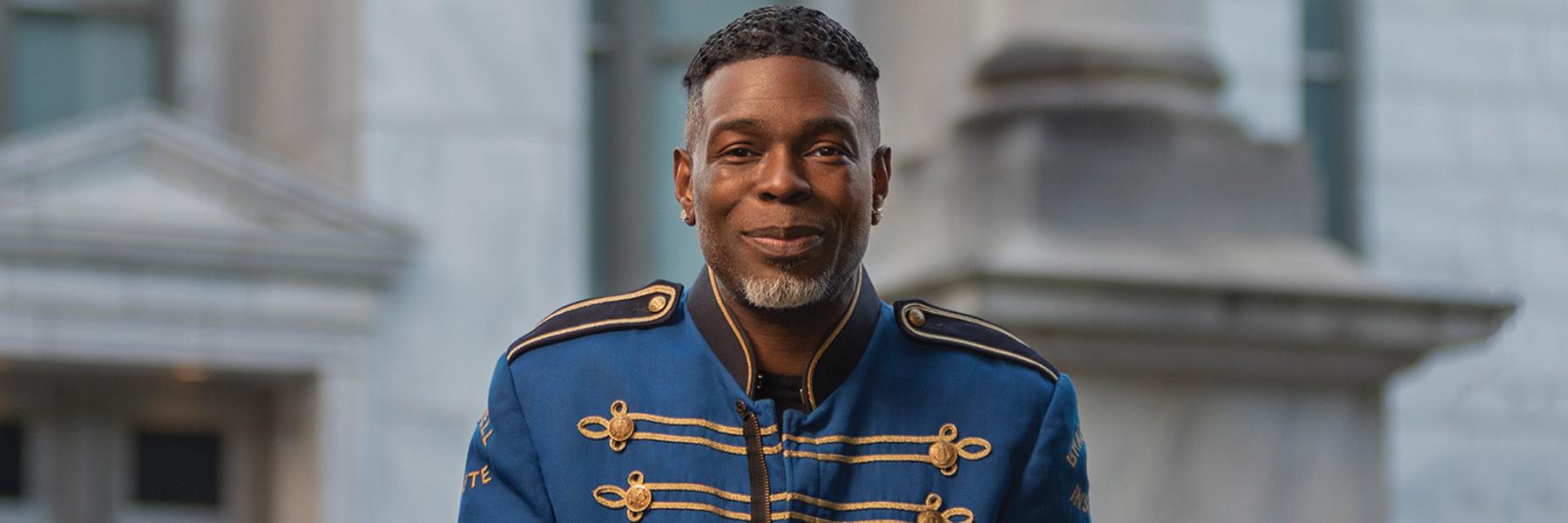
“The better you can tell your story, the more you can connect to someone,” says Morris A. Singletary, who appears on the cover of this issue. To help others, he draws from his own life story as a gay Black man who grew up in Atlanta.
Singletary, 43, was already seriously ill when he was diagnosed with HIV in June 2006, and had to be hospitalized twice. He turned to substance use, losing his job. Eventually he became an HIV peer educator for public health organizations, but life changed in 2016 when he discovered Thrive SS, an organization for Black gay men living with HIV that provides advocacy, peer support, and community building. He saw how storytelling could overcome stigma, and make a connection to people, helping get them connected to care and the services they need.
He soon took to Facebook and began live streaming, sharing his personal experiences. The effort evolved into The Pozitive2Positive Initiative, a Facebook page and a nonprofit HIV education and prevention organization he is slowly building.
Through social media, people are reaching out to him. Many have their own stories to share, but also ask him questions about HIV and where to find services. He’ll get calls or messages at all hours, he says, and energetically helps find the resources they need. With his outgoing personality, he's constantly building a network of contacts throughout Atlanta and across the country to connect people. “I network like crazy,” he says.
The COVID-19 pandemic has revealed the deep disparities in services—particularly access to medical care, he says.
“In public health I’ve learned that there is COVID, and then there’s Black COVID; there is HIV, and there is Black HIV,” he says. “You can see the difference in access to care, resources, and education by ZIP code.”
That disparity is especially obvious in telehealth, which many doctors' offices, clinics, and service organizations now widely use in this pandemic-driven era of social distancing and self-quarantining.
“For people who don’t have smartphones or internet access, telehealth doesn’t work,” he says. “For people who’ve lost jobs and can’t keep their phone on, this puts worry on them. And if that worry becomes stress, it's going to affect their T cell counts and their health.”
Singletary is doing what he can to help people overcome the same hurdles he’s faced, whether it's inequality or stigma. Storytelling can be an antidote to stigma, he says, particularly self-stigma.
“Self-stigma is the sum of family stigma, community stigma, and church stigma. After a while, you believe what you’ve heard about other people like you. You need to believe in and tell your own story.”
Photographer Habeeb Mukasa (@habeebmukasa) shot the cover at Jack Guynn Plaza at the Federal Reserve Gardens in Atlanta.
“Taking Morris’ portrait was a unique experience for me,” he says. “When I learned about the hard work that he tirelessly does for the community, I thought to myself that this would be quick—this man has no time. I was wrong. I was moved by his efforts and particularly the time he took to share his story about how he became an activist. Listening to him gave me the perfect opportunity to capture him in his own element, in his own words. I have been a photographer for just over a decade and taking portraits of everyday people, especially those who make an impact on all our lives, is priceless.”


